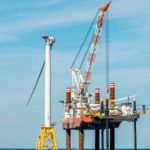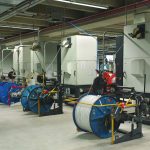Staying safe while working at height starts on the ground — long before a worker heads up the turbine for a maintenance or repair project.
Equipment Inspections
Regular inspections are the best way to always be aware of the current state of your equipment. Knowing the products’ condition will allow you to take preemptive action if you encounter a problem.
Here’s guidance on what is considered “regular” in the industry and who should be doing equipment inspection:
According to OSHA 1926.502(d)(21), personal fall arrest systems must be inspected prior to each use. This includes particular focus on wear, damage, and other deterioration, and defective components. If any of these issues are identified, the product must be removed from service.
ANSI A10.32-2012 states all fall-protection equipment should be inspected at least every six months after its initial service; inspection should be conducted by a competent person.
ANSI Z359 says equipment should be inspected by the user before each use and, additionally, by a competent person other than the user, at intervals of no more than one year.
Employers may create their own inspection criteria; however, it must be at least as stringent as those established by the relevant industry standards or the equipment manufacturer.
A competent person is someone assigned by the employer, who “is capable of identifying existing and predictable hazards in the surroundings or working conditions, which are unsanitary, hazardous, or dangerous to employees, and who has the authorization to take prompt corrective measures to eliminate them.”

Competent persons are fully aware of and know how to recognize potential dangers on the jobsite. They are trained in the proper use of fall-protection equipment, from harness and lanyards, to anchors, guardrails, and ladders, including their proper maintenance. They are also able to take corrective measures to eliminate fall hazards, up to and including halting operations until the hazards have been mitigated. While the everyday care of fall-protection equipment is the responsibility of its user, the competent person plays a key role in making sure that care happens.
To make this easy to remember: A worker should inspect his/her gear, personally, before every use. A competent person should inspect the equipment once a year or more, as required by the manufacturer or local jobsite policies. Guardian Fall Protection, for example, requires a competent person inspection every 12 months per their product instructions. Having a person other than the user as part of the process means more eyes on the gear and more opportunities to catch something the first person missed.
Inspections should be recorded in a log of gear inspections. Many manufacturers provide templates to use, and most include helpful diagrams of the specific products to help inspectors “check off” all key components of the product. An example of comprehensive inspection forms can be found at tinyurl.com/inspectionforms.
Proper Maintenance
Ongoing maintenance of fall protection equipment goes hand-in-hand with regular inspection to keep everything in working order and workers as safe as possible.
Here are tips for proper care of fall-protection products:
• Keep harnesses and any gear with webbing away from sharp or rough surfaces.
• When gear gets dirty, use only water or a mild soap-and-water solution to clean it; more powerful cleaners can compromise the integrity, and thus the strength, of the material components.
• Store harnesses and lanyards in a cool, dry place free of moisture and ultraviolet (UV) rays. Excessive exposure to UV rays can degrade webbing integrity over time.
• If gear becomes wet, don’t leave it in a heap after wearing because doing so will spur growth of mildew. Hang wet gear in a dry area in a configuration that exposes its webbing material, so it can dry slowly and naturally. Do not use a heat source, such as a hair dryer or sunlight, to speed drying.
• Consider using a dedicated storage bag for the product when not in use. A durable gear bag makes storage and portability easier and is an excellent way to keep track of one user’s complete set of fall-protection equipment.
Every jobsite should implement proper equipment inspection and maintenance procedures to take care of the equipment that takes cares of employees. Include step-by-step instructions in employee training, reinforce these behaviors when you see them at work, and take time to explain the importance of them when an employee is non-compliant with these processes. Consider a monthly inspection- or maintenance-focused toolbox talk to review new procedures and to give workers an opportunity to clarify any questions that may have come up over the course of their work.
Lifesaving equipment has an important job. Make sure it’s tended to with intention and commitment, so it can do its job to the best of its abilities.

































